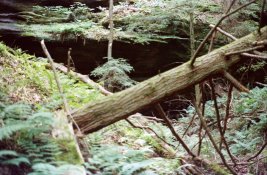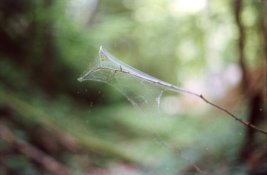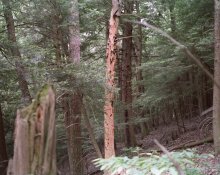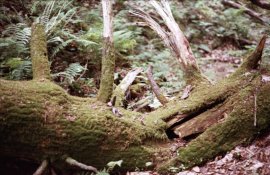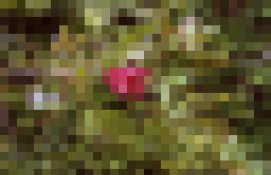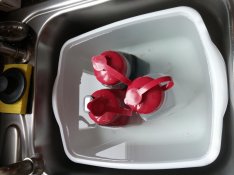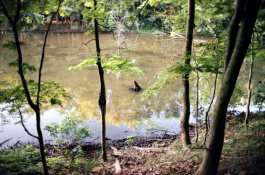Truzi
Member
- Joined
- Mar 18, 2012
- Messages
- 2,651
- Format
- Multi Format
After years of procrastinating, I finally developed C-41 last Saturday.
It came out a bit weird - can someone tell me what I did wrong?

Just kidding...

Straight scans - I let the scanner do it's thing, and have made no post-scan adjustments other than cropping out the carrier.
I was too excited to see what I got, so didn't flatten the negatives (forced air heat in the winter makes the air very dry). I will have to rescan later.
Developing was a bit more involved than expected, but fairly easy. Aside from a few poorly loaded reels, I did not have any major issues. I have a total of 20 rolls to practice on, some expired and some fresh - all shot explicitly as practice rolls. I'm slowly getting the hang of the procedure before doing "important" rolls.
Styrofoam coolers and aquarium heaters were used for tempering baths - it took me a couple weeks to get temperatures adjusted and reliable (I only have so much time to play after work). I can certainly see why people spend a lot of money on equipment, but this setup will hold me over for a while.
I had a Digibase mini kit that was several years old, and part C was purple. Instead I used a liquid Tetenal kit I bought in case this happened (and I have a powdered kit as a backup to the backup). I used Kodak indicator stop, the Digibase separate bleach & fix, and a home-mixed formalin based stabilizer per PE's posts. My best friend and I split a liter of fresh developer and each did a tank simultaneously.
My first roll was milky green when wet, and dried to have a slight yellow-greenish cast in the mask. My friend's roll had the normal orange cast when dry. At first I thought it was because one was Kodak Gold and the other Portra.
Comparing my negatives to a drug-store mini-lab processed negatives, I found the mini-lab was just a tiny bit better, but still seemed a little yellow. I get a slight magenta cast on scans from both my negatives and those from the mini-lab (which I can't seem to correct without getting a different cast, lol).
Even though I RTFM several times, when it came time to mix the developer, I still did it wrong - mixing the parts together before adding the water. I suspect this might explain the mask tint. The fact that my first try is so close to the mini-lab tells me something about the drug store; there is no way my first attempts were without errors.
My best friend's first roll did have the normal orange cast, though. I then remembered she was a bit slow with the developer (longer than 3:15), so I compensated on later rolls and had better results.
Thanks to everyone on APUG for the help - this is why I came here. Even in threads I read but never posted to, I found a lot of valuable information.
Lets see if I can attach a few more images (all de-rezed to 800 by x pixels):
It came out a bit weird - can someone tell me what I did wrong?
Just kidding...
Straight scans - I let the scanner do it's thing, and have made no post-scan adjustments other than cropping out the carrier.
I was too excited to see what I got, so didn't flatten the negatives (forced air heat in the winter makes the air very dry). I will have to rescan later.
Developing was a bit more involved than expected, but fairly easy. Aside from a few poorly loaded reels, I did not have any major issues. I have a total of 20 rolls to practice on, some expired and some fresh - all shot explicitly as practice rolls. I'm slowly getting the hang of the procedure before doing "important" rolls.
Styrofoam coolers and aquarium heaters were used for tempering baths - it took me a couple weeks to get temperatures adjusted and reliable (I only have so much time to play after work). I can certainly see why people spend a lot of money on equipment, but this setup will hold me over for a while.
I had a Digibase mini kit that was several years old, and part C was purple. Instead I used a liquid Tetenal kit I bought in case this happened (and I have a powdered kit as a backup to the backup). I used Kodak indicator stop, the Digibase separate bleach & fix, and a home-mixed formalin based stabilizer per PE's posts. My best friend and I split a liter of fresh developer and each did a tank simultaneously.
My first roll was milky green when wet, and dried to have a slight yellow-greenish cast in the mask. My friend's roll had the normal orange cast when dry. At first I thought it was because one was Kodak Gold and the other Portra.
Comparing my negatives to a drug-store mini-lab processed negatives, I found the mini-lab was just a tiny bit better, but still seemed a little yellow. I get a slight magenta cast on scans from both my negatives and those from the mini-lab (which I can't seem to correct without getting a different cast, lol).
Even though I RTFM several times, when it came time to mix the developer, I still did it wrong - mixing the parts together before adding the water. I suspect this might explain the mask tint. The fact that my first try is so close to the mini-lab tells me something about the drug store; there is no way my first attempts were without errors.
My best friend's first roll did have the normal orange cast, though. I then remembered she was a bit slow with the developer (longer than 3:15), so I compensated on later rolls and had better results.
Thanks to everyone on APUG for the help - this is why I came here. Even in threads I read but never posted to, I found a lot of valuable information.
Lets see if I can attach a few more images (all de-rezed to 800 by x pixels):
Attachments
Last edited by a moderator:








